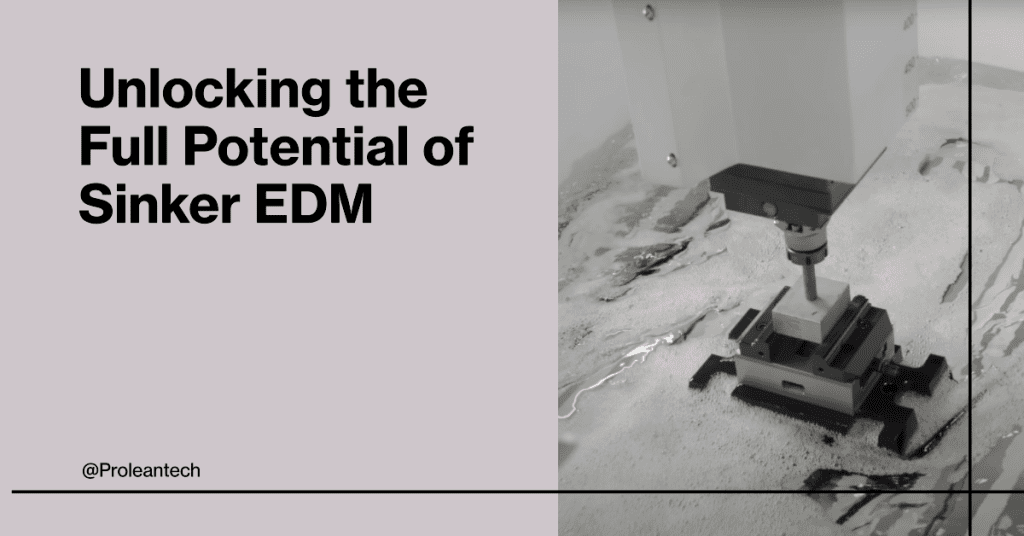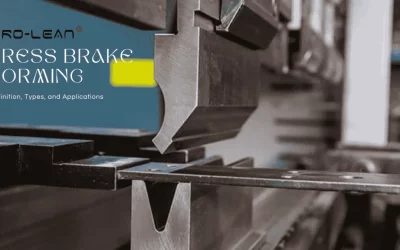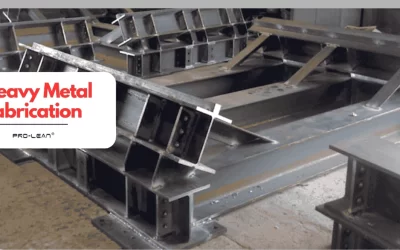
Sinker EDM is a powerful and versatile machining process that uses electrical discharges to remove material from a workpiece. The process is particularly suitable for complex geometries and hard-to-machine materials, making it a valuable tool in many industries. As the demand for intricate and high-quality components continues to increase, Sinker EDM is becoming an essential process in the modern manufacturing landscape.
This article explains the principles, advantages, and capabilities of Sinker EDM technology. It compares Sinker EDM with other EDM methods, discusses optimization strategies, and provides case studies from various industries to demonstrate its wide-ranging applications.
Related:Exploring the Key Differences Between Wire and Sinker EDM Techniques
The Principles of Sinker EDM
Sinker EDM, also known as die-sinking or cavity-type EDM, is a non-traditional machining process that employs electrical discharges to remove material from a workpiece. It involves the use of a conductive electrode, typically made from graphite, copper, or tungsten, which is shaped to mirror the desired final geometry of the workpiece. The electrode is then brought close to the workpiece, and a series of electrical discharges occur between the two materials, causing the workpiece material to erode until the desired shape is achieved.
The process takes place in a dielectric fluid, which serves as an insulator and helps to control the electrical discharges. The fluid also aids in flushing away eroded material, thus preventing the build-up of debris and ensuring a cleaner, more precise cut. The use of a dielectric fluid also helps to minimize the heat-affected zone (HAZ) and reduce thermal damage to the workpiece material.
One key aspect of Sinker EDM technology is that there is no direct contact between the electrode and the workpiece, which eliminates tool wear and allows for extremely high accuracy and precision in machining. This unique feature makes Sinker EDM particularly well-suited for intricate and complex geometries, as well as for hard-to-machine materials.
Advantages of Sinker EDM
Sinker EDM offers several advantages that make it an attractive choice for modern manufacturing processes. Some of these include:
- Complex geometries: Sinker EDM’s non-contact nature allows for the creation of intricate and complex shapes that may be difficult or impossible to achieve using conventional machining methods.
- High precision: The process is capable of achieving extremely tight tolerances and high levels of accuracy, making it ideal for applications requiring precise component dimensions.
- Hard-to-machine materials: Sinker EDM is particularly well-suited for machining hard and brittle materials, such as carbide, ceramics, and hardened steel, which can be challenging to machine using other methods.
- Reduced tool wear: Since there is no direct contact between the electrode and the workpiece during the process, tool wear is virtually eliminated, resulting in lower production costs and extended tool life.
- Minimal heat-affected zone: The use of a dielectric fluid helps to minimize the heat-affected zone, resulting in less thermal damage to the workpiece material and improved dimensional stability.
Capabilities and Features of Sinker EDM
Sinker EDM machines come with a variety of capabilities and features that enhance their versatility and applicability in modern manufacturing processes. Some of these features include:
- Advanced control systems: Modern Sinker EDM machines are equipped with sophisticated control systems that allow for precise control of the electrical discharge parameters, such as voltage, current, and discharge duration. This enables the optimization of the machining process for different materials and applications.
- Multi-axis movement: Many Sinker EDM machines feature multi-axis movement capabilities, allowing for the machining of complex geometries and undercuts that would be difficult or impossible to achieve with other machining methods.
- Automated electrode and tool changing: Some Sinker EDM machines are equipped with automated systems for electrode and tool changing, which can significantly reduce setup time and improve overall process efficiency.
- Integrated metrology: Advanced Sinker EDM machines may also include integrated metrology systems, allowing for in-process measurement and inspection of the workpiece, ensuring that the desired tolerances and accuracy are achieved.
- Variable flushing capabilities: Sinker EDM machines offer variable flushing capabilities, which involve controlling the flow and direction of dielectric fluid during the machining process. This feature helps in the efficient removal of debris and facilitates better surface finish and accuracy.
- High material removal rates: Sinker EDM machines are known for their high material removal rates, making them suitable for machining larger workpieces and achieving faster production times compared to other methods.
- Surface finish control: With the ability to control the discharge parameters and the use of specialized electrode materials, Sinker EDM machines can achieve excellent surface finishes, ranging from rough to mirror-like finishes, depending on the application requirements.
- Ability to machine conductive and non-conductive materials: Unlike wire EDM, Sinker EDM can work with both conductive and non-conductive materials, expanding its application range to a wider variety of workpieces.
- Machining of hardened materials: Sinker EDM machines are capable of machining hardened materials, including heat-treated steels and exotic alloys. The EDM process can remove material from even the hardest materials without compromising their integrity or inducing heat-affected zones.
- Micro-machining capabilities: Sinker EDM machines have the ability to perform micro-machining operations with high precision, making them suitable for applications that require intricate details and fine features.
- CAD/CAM integration: Many modern Sinker EDM machines can be seamlessly integrated with computer-aided design (CAD) and computer-aided manufacturing (CAM) software, allowing for efficient programming, simulation, and optimization of the machining process.
- Real-time monitoring and diagnostics: Advanced Sinker EDM machines may feature real-time monitoring and diagnostics systems, providing operators with insights into the machining process, detecting any anomalies, and facilitating proactive maintenance and troubleshooting.
These capabilities and features make Sinker EDM machines a versatile and powerful tool in the manufacturing industry. With their ability to handle a wide range of materials, achieve high accuracy and surface finishes, and perform complex machining operations, Sinker EDM machines continue to play a vital role in various industries, including aerospace, automotive, medical, and mold-making.
Try Prolean Now!
Sinker EDM Applications
Sinker EDM has found wide-ranging applications in various industries, thanks to its unique capabilities, high precision, and ability to machine complex geometries. Some of these industries and applications include:
- Aerospace: Sinker EDM is used extensively in the aerospace industry to produce components with tight tolerances, such as turbine blades, fuel system components, and engine casings.
- Automotive: The automotive industry employs Sinker EDM for the production of intricate components, such as fuel injectors, transmission components, and engine parts.
- Medical: The high precision and accuracy of Sinker EDM make it ideal for the production of medical devices and implants, such as surgical instruments, orthopedic implants, and dental prosthetics.
- Mold and die production: Sinker EDM is a popular choice for the production of molds and dies, particularly for complex geometries and hard-to-machine materials.
- Electronics: The process is also used in the electronics industry to manufacture components with intricate designs and tight tolerances, such as connectors, sensors, and micro components.
Related to:
- CNC Machining for Automotive Industry: Applications and Advantages
- EDM (Electrical Discharge Machining) in Medical Device Manufacturing
Sinker EDM VS Wire EDM
There are two main types of EDM: Sinker EDM and Wire EDM. While both methods utilize electrical discharges to remove material, they differ in their approach and applications.
| Criteria | Wire EDM | Sinker EDM |
|---|---|---|
| Suitable for | Cutting thin and delicate workpieces and producing parts with tight radii and complex shapes | Machining complex geometries, hard-to-machine materials, and thicker workpieces. Producing components with tight tolerances and high precision |
| Limitations | Not suitable for cutting thicker materials or producing parts with deep cavities or undercuts | Slower than Wire EDM in certain applications |
Read more: Wire Cut VS EDM: Cost and Performance Analysis
Optimizing Sinker EDM processes for efficiency
To achieve maximum efficiency and productivity in Sinker EDM processes, it is important to optimize the various parameters that affect the machining process. Some of these parameters include:
| Criteria | Impact on Machining | Examples |
|---|---|---|
| Electrode material and geometry | Efficiency and accuracy | Choosing the right electrode material and geometry for the workpiece material and geometry is critical to achieving optimal results. |
| Discharge parameters | Efficiency and accuracy | Adjusting the various electrical discharge parameters, such as voltage, current, and pulse duration, can optimize the machining process for different materials and applications. |
| Dielectric fluid | Efficiency and accuracy | The choice of dielectric fluid can impact the machining process’s speed, precision, and surface finish, depending on the fluid’s properties, such as viscosity and dielectric strength. |
| Automation and tool changing | Setup time and efficiency | Automated systems for electrode and tool changing can reduce setup time and improve overall process efficiency, resulting in higher throughput and reduced production costs. |
Related to: A Look at the Precision and Accuracy of EDM
Case Studies in Various Industries
Sinker EDM has been used in a wide range of industries to produce complex and intricate components with high precision and accuracy. Here are a few case studies that highlight the capabilities and benefits of Sinker EDM in various applications:
Aerospace Industry
Sinker EDM was used to produce turbine blades for a gas turbine engine. The blades were made from a nickel-based super-alloy and required tight tolerances and complex geometries. The Sinker EDM process was able to achieve the required tolerances and geometries while minimizing tool wear and reducing thermal damage to the workpiece material.
Automotive Industry
Sinker EDM was used to produce a complex transmission component for an automotive application. The component required tight tolerances and intricate geometries, which were difficult to achieve using other machining methods. The Sinker EDM process was able to produce the component with high precision and accuracy, resulting in improved performance and reliability.
Medical Industry
Sinker EDM was used to produce a dental implant with a complex geometry. The implant required high precision and accuracy to ensure proper fit and function. The Sinker EDM process was able to produce the implant with the required geometry and tolerances, resulting in successful implantation and improved patient outcomes.
Future Trends and Developments
As the demand for complex and high-quality components continues to increase, Sinker EDM technology is expected to continue to evolve and improve. Some of the future trends and developments in Sinker EDM technology include:
- Higher precision and accuracy: Sinker EDM machines are expected to become even more precise and accurate, with new technologies and materials being developed to enhance the machining process.
- Improved automation and integration: Sinker EDM machines are expected to become more automated and integrated, with advanced control systems and integrated metrology systems becoming standard features.
- New materials and applications: Sinker EDM is expected to be applied to new materials and applications, including additive manufacturing, composites, and nanomaterials.
Need Sinker EDM Services for Your Project? Contact ProleanTech
If you require Sinker EDM services for your project, ProleanTech is here to help. We specialize in providing high-quality Sinker EDM services to a wide range of industries, including aerospace, automotive, medical, and electronics. Our team of experienced engineers and machinists uses state-of-the-art Sinker EDM machines to produce components with exceptional precision and accuracy.
Conclusion
Sinker EDM is a powerful and versatile EDM machining process that offers several advantages over traditional machining methods. Its ability to produce complex geometries, achieve high precision and accuracy, and machine hard-to-machine materials make it an essential process in modern manufacturing. By understanding the principles, advantages, and capabilities of Sinker EDM, EDM manufacturers can unlock their full potential and achieve greater efficiency and productivity in their processes.
FAQ’s
What is Sinker EDM?
Sinker EDM is a non-traditional machining process that uses electrical discharges to remove material from a workpiece.
What are the advantages of Sinker EDM?
Some of the advantages of Sinker EDM include its ability to produce complex geometries, achieve high precision and accuracy, machine hard-to-machine materials, reduce tool wear, and minimize thermal damage to the workpiece.
What industries use Sinker EDM?
Sinker EDM is used in a wide range of industries, including aerospace, automotive, medical, mold and die production, and electronics.
What is the difference between Sinker EDM and Wire EDM?
Sinker EDM and Wire EDM are two types of EDM processes that differ in their approach and applications. Sinker EDM is better for complex geometries, hard-to-machine materials, and thicker workpieces, while Wire EDM is better for thin, delicate workpieces, tight radii, and complex shapes. Sinker EDM is also slower than Wire EDM in some applications.




0 Comments